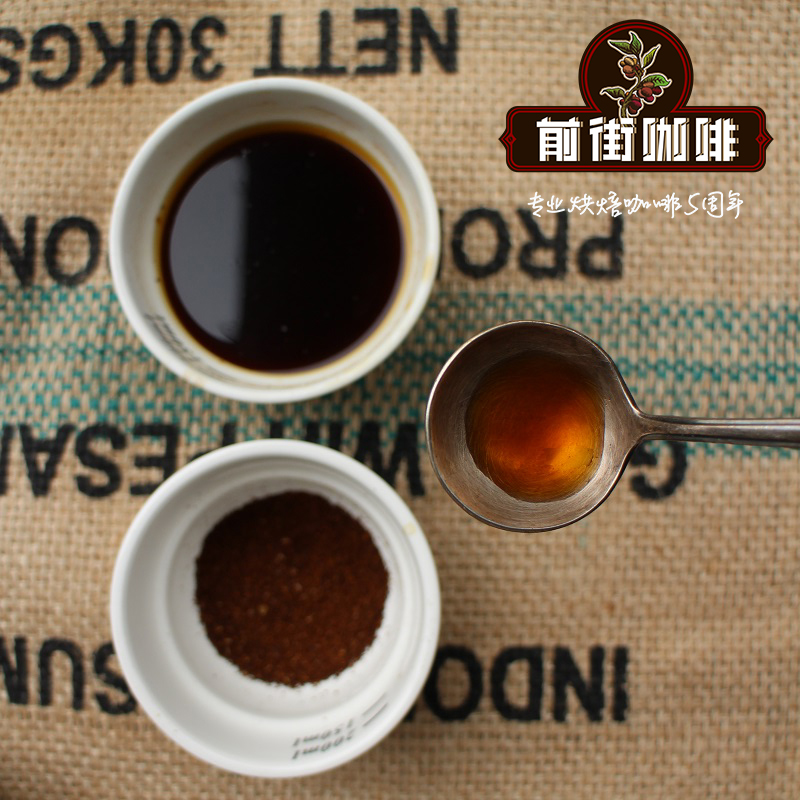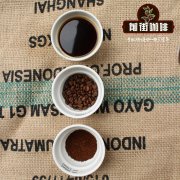How coffee beans are made into various flavors | how is coffee bean flavor formed?

Professional coffee knowledge exchange more coffee bean information please follow the coffee workshop (Wechat official account cafe_style)
Coffee beans are the kernels in the fruits of coffee trees. They are simply the seeds of coffee.
It contains a lot of nutrients, in which sugar plays a key role in the taste of coffee, and the higher the altitude, the higher the sugar content.
Coffee roasting is a process that promotes the Mena reaction and caramel reaction inside the raw beans, producing more wonderful flavors. Of course, all these require conditions. The effect of roasting on the flavor of coffee lies in the size of firepower and the length of baking time. It is normal for the same bean to have different roasting methods and different tastes. It may become sour, bitter or balanced.
When the roasting degree is not good, some high-quality coffee will lose the flavor of flowers and fruits. However, no matter how good the roasting technology is, it is still limited by the conditions of raw materials, and poor raw materials cannot produce a very advanced taste. Roasting is a way to extract the taste of coffee beans.
During baking, sugars and amino acids at high temperatures produce a series of complex chemical changes, known as the Mena reaction. It's like the process of frying steak from raw meat to cooked meat, and the process of baking bread.
The difference of roasting degree of coffee beans.
? The factors that determine the taste of coffee are linked to each other, good raw materials and the right roasting method can stimulate the potential perfect flavor of coffee, and then through the correct extraction method, the flavor will be shown in the cup.
The baking degree is simply "the length of time for the change of temperature".
The most difficult part of baking is the best time to stop. If you don't stop baking at the best time, it will certainly affect the flavor of coffee beans.
The baking degree is mainly divided into four categories.
Shallow baking, medium baking, medium deep baking and deep baking.
In more detail, these four categories are subdivided into eight baking degrees.
Shallow baking
In all baking stages, the lightest baking degree, the coffee bean surface shows a light cinnamon color, its taste and aroma are not enough, generally used in testing, rarely used to taste.
In terms of baking time, it is close to "explosion". (ps: "one burst" refers to the first burst caused by the heated volume expansion of raw beans during baking.)
Cinnamon baking
The appearance shows cinnamon, the smell of green has been removed, the fragrance is OK, the acidity is strong, the taste of coffee is light, and there is less selling on the market.
In terms of time, it is about the middle of the "explosion".
Medium baking
The appearance is brown, in addition to the sour taste, bitterness also appeared, the taste is good, at this time the acid is heavier than bitter, mellow and moderate, also known as American baking.
In terms of baking time, it is nearing the end of the first bursting period.
High baking
Belongs to the moderate micro-deep baking, the surface already appears a little thick brown, the bitterness also becomes stronger. Coffee tastes sour and bitter, with good aroma and flavor, and is the most popular way of baking beans on the market.
According to the baking time, when the "explosion" is over, the coffee beans are wrinkled and the aroma changes.
City baking
The appearance of coffee brown, the most standard degree of roasting, bitter and sour taste balance, so that the coffee has a multi-layered feel, so that Americans who originally prefer medium roasting change their taste and like it.
In terms of baking time, it is close to "second explosion". (ps: raw beans continue to be heated after the first burst, a large amount of moisture is lost, and the volume expands rapidly resulting in the second burst. )
City-wide baking
The appearance shows dark brown, the color becomes quite dark, the surface appears oily, bitterness is stronger than sour taste, and it is suitable for coffee beans with strong characteristics such as Mantenin, Hawaii and so on.
According to the baking degree, the "second explosion" is just over.
French baking
Belongs to the deep baking, the appearance appears black, throws a trace of brown, presents the thick brown color with black, the sour taste has not felt, in Europe especially in France the most popular, because the fat has infiltrated to the surface, with a unique flavor, very suitable for iced coffee.
Italian baking
Jing coffee beans are roasted until completely black, with a glossy surface close to coking, with only bitter taste, simple taste and sometimes smoky taste. It is suitable for highland coffee beans with thick pulp and strong acidity.
In short, as the baking goes on, fruit acid begins to be produced. After a certain stage, there will be less and less, less and less. and the bitterness will be more and more.
END
Important Notice :
前街咖啡 FrontStreet Coffee has moved to new addredd:
FrontStreet Coffee Address: 315,Donghua East Road,GuangZhou
Tel:020 38364473
- Prev

Introduction to the differences of various flavors of coffee beans | know various coffee flavors
Professional coffee knowledge exchange more coffee bean information Please pay attention to coffee workshop (Wechat official account cafe_style) the origin of coffee beans is mainly divided into: Africa, Central and South America, Asia and islands in flavor, African bean flavor: Ethiopian coffee has a strong orange flavor, Kenya coffee has a strong raspberry flavor, as well as the sour aroma of plum juice and grapefruit, and sugar cane clear.
- Next

Know how coffee beans come from. How do stir-fried coffee beans taste?
Professional coffee knowledge exchange more information on coffee beans Please pay attention to the coffee factory (Wechat official account cafe_style) roasted, ground, brewed coffee beans are actually the seeds of coffee fruit. Like all plants in nature, coffee fruit comes from coffee trees, which grow through a single seed. The appearance and characteristic ratio of coffee are different from each other.
Related
- Beginners will see the "Coffee pull flower" guide!
- What is the difference between ice blog purified milk and ordinary milk coffee?
- Why is the Philippines the largest producer of crops in Liberia?
- For coffee extraction, should the fine powder be retained?
- How does extracted espresso fill pressed powder? How much strength does it take to press the powder?
- How to make jasmine cold extract coffee? Is the jasmine + latte good?
- Will this little toy really make the coffee taste better? How does Lily Drip affect coffee extraction?
- Will the action of slapping the filter cup also affect coffee extraction?
- What's the difference between powder-to-water ratio and powder-to-liquid ratio?
- What is the Ethiopian local species? What does it have to do with Heirloom native species?

